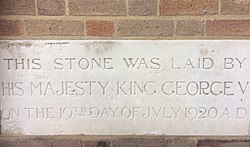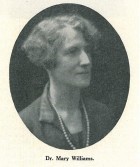Welsh: Prifysgol Abertawe | |||||||||||||||||||||||||
 | |||||||||||||||||||||||||
Former names | University College of Swansea, University of Wales Swansea | ||||||||||||||||||||||||
|---|---|---|---|---|---|---|---|---|---|---|---|---|---|---|---|---|---|---|---|---|---|---|---|---|---|
| Motto | Welsh: Gweddw crefft heb ei dawn | ||||||||||||||||||||||||
Motto in English | "Technical skill is bereft without culture" | ||||||||||||||||||||||||
| Type | Public | ||||||||||||||||||||||||
| Established | 1920 - University College of Swansea, 1996 - University of Wales, Swansea | ||||||||||||||||||||||||
| Endowment | £7.31 million (2023) [1] | ||||||||||||||||||||||||
| Budget | £412.3 million (2022/23) [1] | ||||||||||||||||||||||||
| Chancellor | Dame Jean Thomas [2] | ||||||||||||||||||||||||
| Vice-Chancellor | Paul Boyle | ||||||||||||||||||||||||
Administrative staff | 3290 | ||||||||||||||||||||||||
| Students | 21,225 (2023/24) [3] | ||||||||||||||||||||||||
| Undergraduates | 15,690 (2023/24) [3] | ||||||||||||||||||||||||
| Postgraduates | 5,540 (2023/24) [3] | ||||||||||||||||||||||||
| Location | , Wales, United Kingdom 51°36′35″N3°58′50″W / 51.60972°N 3.98056°W | ||||||||||||||||||||||||
| Campus | Suburban/coastal | ||||||||||||||||||||||||
| Colours | Academic: Blue and white | ||||||||||||||||||||||||
| Affiliations | ACU EUA University of Wales Universities UK | ||||||||||||||||||||||||
| Website | swansea | ||||||||||||||||||||||||
 | |||||||||||||||||||||||||
 | |||||||||||||||||||||||||
Swansea University (Welsh : Prifysgol Abertawe) is a public research university located in Swansea, Wales, United Kingdom. It was established as University College of Swansea in 1920, [4] as the fourth college of the University of Wales. In 1996, it changed its name to the University of Wales Swansea [4] following structural changes within the University of Wales. The title of Swansea University was formally adopted on 1 September 2007 when the University of Wales became a non-membership confederal institution and the former members became universities in their own right. [5]
Contents
- History
- Foundations
- Post-war campus development
- Campus
- Sports
- Museum of Egyptian Antiquities (The Egypt Centre)
- Organisation and administration
- Governance
- Faculties and Schools
- Humanities and Social Sciences
- Medicine, Health and Life Science
- Science and Engineering
- Research
- Selected research centres and institutes
- Academic profile
- Rankings and reputation
- International partnerships
- Student life
- Sports 2
- Student media
- Student accommodation
- Notable alumni and academics
- Academics
- Alumni
- Politics
- See also
- References
- External links
Swansea University has three faculties across its two campuses which are located on the coastline of Swansea Bay. The Singleton Park Campus is set in the grounds of Singleton Park to the west of Swansea city centre. The £450 million Bay Campus, which opened in September 2015, is located next to Jersey Marine Beach to the east of Swansea in the Neath Port Talbot area. The annual income of the institution for 2022–23 was £412.3 million of which £67.1 million was from research grants and contracts, with an expenditure of £348 million. [1]
It is the third largest university in Wales in terms of number of students. It offers about 450 undergraduate courses, 280 postgraduate taught and 150 postgraduate research courses to 20,375 undergraduate and postgraduate students. [6]




















